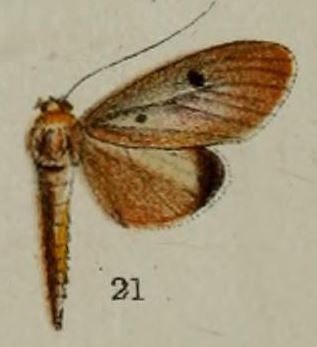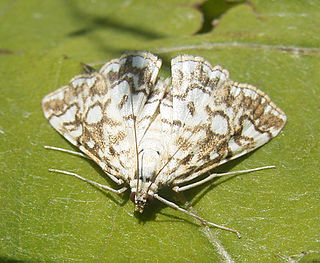
Pyraustinae is a large subfamily of the lepidopteran family Crambidae, the crambid snout moths. It currently includes about 1,280 species Most of them tropical but some found in temperate regions including both North America and Europe.

Shaun Hampson is a former Australian rules footballer who played 98 games across a 12-year career with the Carlton and Richmond Football Club in the Australian Football League (AFL).

Spilomelinae is a very species-rich subfamily of the lepidopteran family Crambidae, the crambid snout moths. With 4,135 described species in 344 genera worldwide, it is the most speciose group among pyraloids.

Glyphodes is a genus of moths of the family Crambidae described by Achille Guenée in 1854.
Mimudea is a genus of moths of the family Crambidae described by William Warren in 1892.

Obtusipalpis is a genus of moths of the family Crambidae described by George Hampson in 1896.

Nosophora is a genus of moths in the family Crambidae.

Phryganodes is a genus of moths of the family Crambidae described by Achille Guenée in 1854.
Piletocera is a genus of moths of the family Crambidae. The genus was first described by Julius Lederer in 1863.

Macalla is a genus of snout moths. It was described by Francis Walker in 1859.

Acentropinae is a fairly small subfamily of the lepidopteran family Crambidae, the crambid snout moths. Species of this subfamily are exclusively found in wetlands and aquatic habitats.
Nosophora bisexualis is a moth in the family Crambidae. It was described by George Hampson in 1912. It is found on the Solomon Islands.
Nosophora fulvalis is a moth in the family Crambidae. It was described by George Hampson in 1898. It is found in Papua New Guinea, where it has been recorded from Fergusson Island in the D'Entrecasteaux Islands. It is also found on Borneo and in Australia.
Nosophora barbata is a moth in the family Crambidae. It was described by George Hampson in 1899. It is found in Papua New Guinea, where it has been recorded from the D'Entrecasteaux Islands.

Nosophora euryterminalis is a species of moth in the family Crambidae. It was described by George Hampson in 1918. It is found in Taiwan, China and Japan.
Nosophora flavibasalis is a moth in the family Crambidae. It was described by George Hampson in 1899. It is found on New Guinea.
Nosophora mesosticta is a moth in the family Crambidae. It was described by George Hampson in 1912. It is found in Assam, India.
Nosophora obliqualis is a moth in the family Crambidae. It was described by George Hampson in 1893. It is found in Sri Lanka.
Nosophora parvipunctalis is a moth in the family Crambidae. It was described by George Hampson in 1896. It is found in the Tenasserim Hills in the border region of Myanmar and Thailand.









